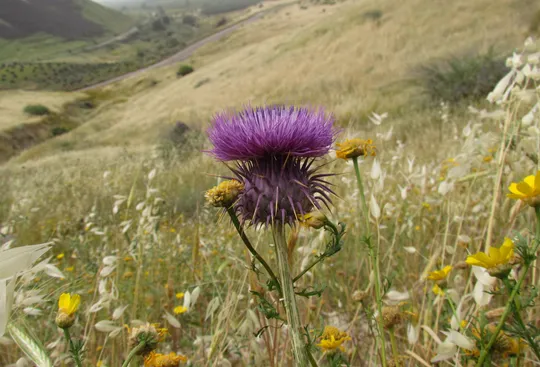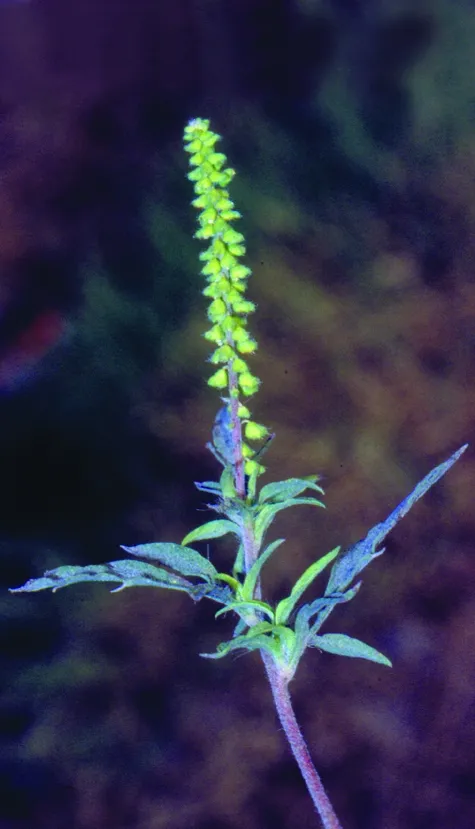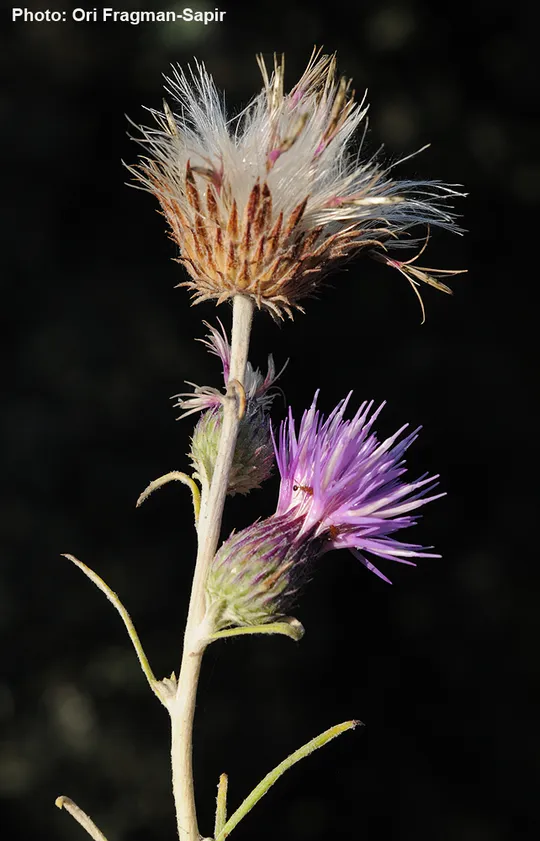False Plumed Thistle
Onopordum carduiforme
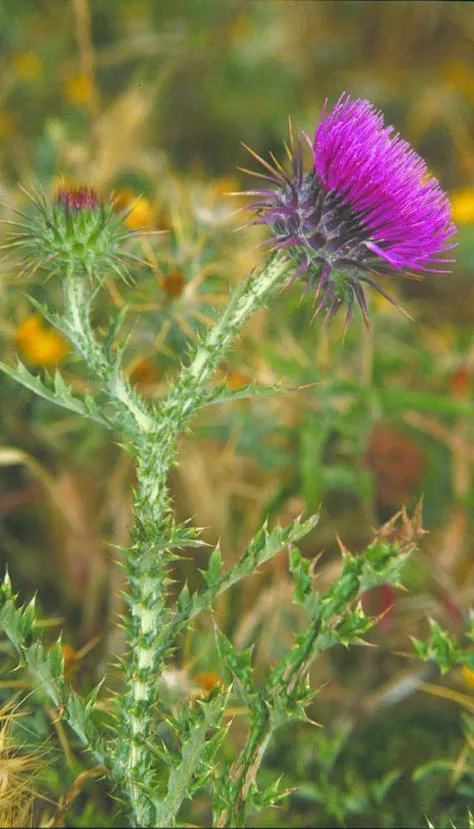
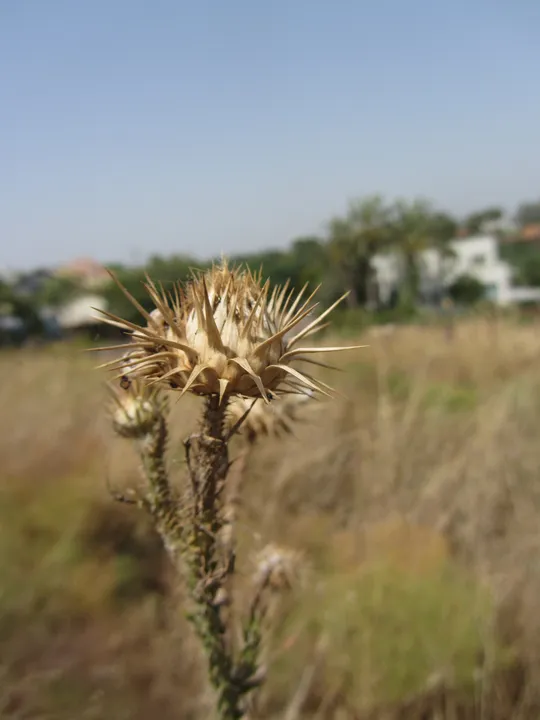
Onopordum carduiforme
grows in
six regions
in Israel, mostly on the coastal plain: from
the Acre Valley in the north (two
sites: Hatsrot
Yesef and the Persian cemetery in
Acre); via the Carmel Coast (6 sites with few plants); the Sharon, where the largest number of sites are located (27); the Philistian Plain (7 sites, those in the Tel-Aviv area are
extinct); Western Negev (2 sites in the Nir Am area) and a single site in the Philistian
Plain at Tel Tsafit.
Disturbed habitats, on
sandy soil, hamra and sandy-loess, with a precipitation of over 400 mm. The "Tel Aviv” variety was originally (1942) described by Eig as a separate species specific to heavy soils on the coastal plain. Interestingly the same species grows in Jordan on a limestone
substrate.
For the genus, see Onopordum
macrocephalum.
O. carduiforme belongs to the group of large Onopordum species that grow in Mediterranean regions in the eastern Mediterranean basin: O. blancheanum and O. floccosum. All the species have a characteristic short
achene pappus and short pappus hairs. O. carduiforme is
a vicarious species of O. blancheanum: the first grows on the coastal plain on sand and the other one grows on the Golan Heights on basalt
soils. Both are calcifuge, although at Irbid in northern Jordan the two species grow sympatrically on a
calcareous substrate.
· At least 88 Onopordum carduiforme sites are known in Israel, mainly along the coastal plain.
· Most of the
surveyed populations number between a few (3) to a few dozen plants (50). In only two cases of the 44 populations surveyed on the coastal plain
were large
populations, with 500 plants found (in the Hadera Garbage Dump near the Sharon Park and on Tel Gibtun).
· Most sites are not in nature reserves.
· O. carduiforme actually develops and thrives in disturbed
habitats such as those near sandy garbage sites. Nevertheless, excessive disturbance and destruction of the topsoil leads to the extinction of populations.
·
Most of the populations this
sub-endemic species
are found in Israel with a few in Lebanon and Syria. Therefore, Israel is primarily responsible for protecting the species.
The geographic survey of
Onopordum carduiforme in
the western Negev and the
Philistian Plain should be completed. Two populations, in Hasharon Park and in Tel Gibtun, should
be monitored and the species' life span and the size of its soil seed bank should be
examined.
Onopordum carduiforme is endemic to the
Levant: in addition to Israel it
also grows in the Irbid Heights in Jordan,
and in the Mediterranean regions of Syria and Lebanon. According to the literature, it
deviates in Syria and Lebanon from sandy substrates in the coastal area.
Onopordum carduiforme is an annual or perennial herbaceous thistle,
sub-endemic to Israel and to the coastal plain. At present, there are many populations and the species is characteristic of abandoned sites, but the pace of
development and destruction of the natural terrain on the coastal plain justify the red status of
the species, especially as it is endemic.
Eig, A. 1942, Revision of the Onopordon species of Palestine, Syria and adjacent countries. Palestine J. of Botany, Jerusalem Series, 2(4): 185-199.
Current Occupancy Map
| 1000 squre meter pixel | 5000 squre meter pixel | 10000 squre meter pixel | |
|---|---|---|---|
| number of observations | 0 | 0 | 0 |
| in total pixels | 0 | 0 | 0 |
| Family | Asteraceae |
| Classification | On the extremely rare species list |
| Ecosystem | Coastal area |
| Chorotype | Eastern Mediterranean |
| Conservation Site | The Sharon Park and Hadera Garbage Site (landfill) |
| Rarity |
1
1
6
|
|---|---|
| Vulnerability |
0
1
4
|
| Attractiveness |
0
0
4
|
| Endemism |
0
1
4
|
| Red number |
1
2.1
10
|
| Peripherality | 0 |
| IUCN category | DD EW EX LC CR EN VU NT |
| Threat Definition according to the red book | Vulnerable |
 Based on:
Based on:

